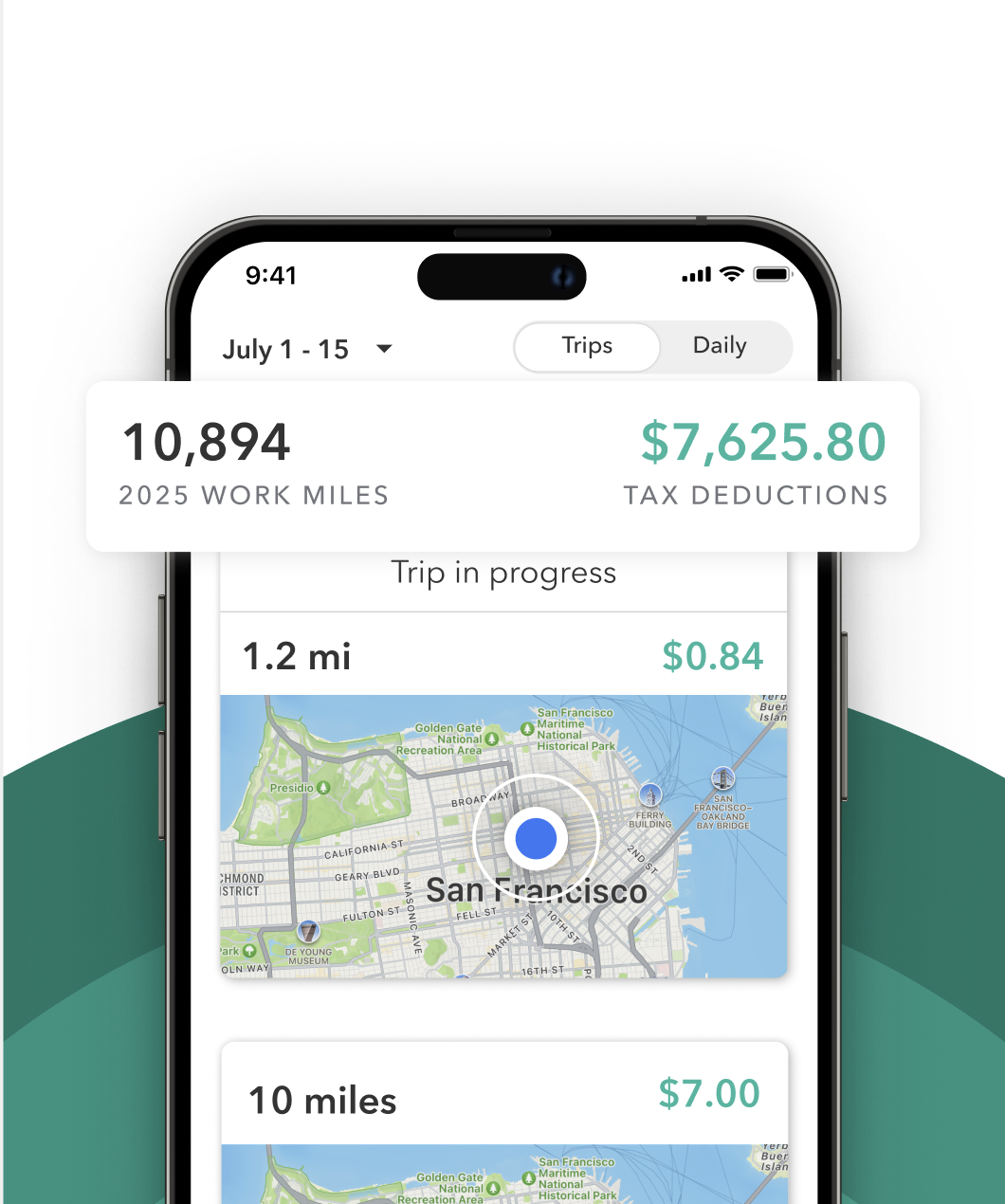If you drive for Lyft as an independent contractor, keeping track of your mileage is one of the smartest ways to lower your tax bill. Every mile you drive for business can reduce your taxable income, saving you real money at tax time. But how do you know what counts as deductible mileage? How should you track it? And which method gives you the best deduction?
This guide will walk you through how mileage deductions work for Lyft drivers, explain what the IRS allows, help you choose the right method, and show you how to track your miles so you don’t leave any savings behind.
Why mileage tracking matters for Lyft drivers
Driving for Lyft means you are running your own business. It also means you’re responsible for your own taxes and expenses, including your vehicle costs. The IRS recognizes that using your car for work costs money. To help, they allow you to deduct those costs from your taxable income, which lowers what you owe.
You can choose between two methods:
- The Standard Mileage Rate
- The Actual Expenses Method
Most drivers choose the Standard Mileage Rate because it’s simpler and often leads to higher deductions for those who drive a lot.
But whichever method you pick, the IRS requires accurate, detailed records of your business miles. Without them, you could lose the deduction or face problems in an audit.
What counts as business mileage for Lyft
Not every mile you drive can be written off. The IRS says deductible miles must be “ordinary and necessary” for your business.
Examples of deductible Lyft miles include:
- Driving to pick up passengers
- Taking riders to their destinations
- Staying online and available between ride requests
- Traveling to required vehicle inspections or Lyft support centers
What you can’t deduct:
- Driving home after logging out for the day
- Your commute from home to your first pickup if you’re offline
- Personal errands during your Lyft shift
Keeping these trips separate is crucial. Blending personal and business miles can lead to trouble if you’re ever audited.
Standard Mileage Rate
This is the most popular method among Lyft drivers because it’s simple and easy to use. You keep track of all your business miles for the year and multiply that number by the IRS-set rate. For 2024, that rate is 67 cents per mile.This single rate is designed to cover all your vehicle costs: gas, insurance, maintenance, depreciation, and more.
Actual Expenses Method
This method can be worth considering if you have high vehicle costs, like a newer car or expensive maintenance. You add up all the actual costs of operating your car for Lyft during the year. Then you figure out what percentage of your total miles were for business. You can deduct that percentage of your total costs.
Eligible expenses include:
- Gas and oil
- Repairs and maintenance
- Insurance premiums
- Registration fees
- Lease payments or depreciation
Example: You drive 20,000 total miles in a year, with 15,000 for Lyft. That’s 75 percent business use. You can deduct 75 percent of your vehicle costs.
Expenses you can deduct regardless of method
Whether you choose the Standard Mileage Rate or Actual Expenses, there are some costs you can still deduct separately. These include things like tolls paid during Lyft rides and parking fees while waiting for passengers. Just remember you can’t deduct fines or tickets.
How to track your Lyft mileage
The IRS expects you to keep a complete, accurate mileage log. Estimating or guessing isn’t good enough.
Your mileage log must include:
- Date of the trip
- Starting point and destination
- Business purpose (for example, “Lyft ride to airport”)
- Total miles driven
You can do this manually in a notebook or spreadsheet, but that’s time-consuming and easy to forget on busy days.
Mileage tracking apps have become popular among Lyft drivers to make tracking miles easy, with Everlance being the most recommended. Everlance makes tracking effortless by automatically recording your trips in the background. You can review and categorize them as business or personal with a simple swipe, creating an IRS-ready log that’s easy to export at tax time.
How to claim your mileage deduction
When you file taxes as a Lyft driver, you’ll report your business income and expenses on Schedule C (Form 1040).
Like we mentioned earlier, you’ll choose one of two methods for vehicle expenses:
- Standard Mileage Rate: Total business miles × current IRS mileage rate.
- Actual Expenses: Business-use percentage × actual vehicle costs.
You can’t use both methods for the same vehicle in the same year. Once you choose, you need to stick with it unless you meet IRS requirements to switch. Always save your logs and receipts for at least three years in case of an audit.
Common mistakes Lyft drivers make
Many rideshare drivers lose money or risk IRS problems by making simple mistakes:
- Not tracking miles consistently
- Including personal trips as business miles
- Forgetting to save receipts for actual expenses
- Estimating or rounding miles instead of logging trips accurately
- Not understanding which method is best for them
Avoiding these errors helps ensure you get the biggest deduction you’re entitled to and keeps you safe if you’re ever audited.
Mileage is usually the largest Lyft tax deduction available to drivers. By tracking every business mile and choosing the best deduction method, you can significantly lower your taxable income and keep more of what you earn. With the right habits and tools, like Everlance, staying organized and IRS-compliant becomes easy. Don’t leave money on the table.











